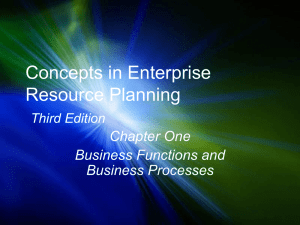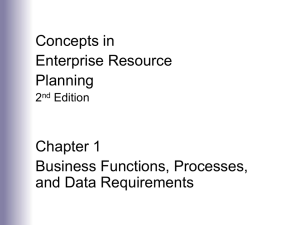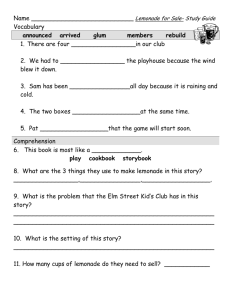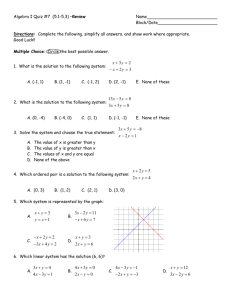Information Flow
advertisement
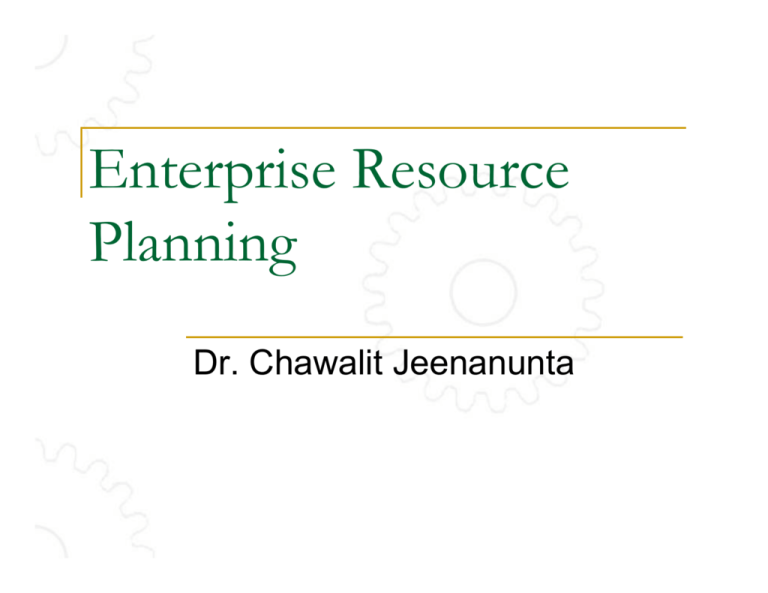
Enterprise Resource Planning Dr. Chawalit Jeenanunta Chapter Objectives Name a business's main areas of operation. Differentiate a business process from a business function. Identify the kinds of data that each main functional area produces. Identify the kinds of data that each main functional area needs. Define integrated information systems and state why they are important Slide 2 Functional Areas of Operation Most companies have four main functional areas: Marketing and Sales (M/S) Supply Chain Management (SCM) Accounting and Finance (A/F) Human Resources (HR) Each main functional area consists of a number of narrower business functions specific to the functional area. Historically, businesses have organized themselves according to business functions. Slide 3 Functional Areas of Operation Slide 4 Information Flow VS Material Flow Finance & Accounting Information Flow Logistics Information Flow Manufacturing Information Flow Sales Information Flow Marketing Information Flow Top Management Material & Product Flow Figure 2-2 Information and material flows in a functional business model Slide 5 Functional Business Model Problems with the model: Flexibility and rapid decision-making were not possible Organizations had become overstaffed and topheavy Ability to respond to change was limited Slide 6 Information System An information system includes the: Computers People Procedures Software Required to store, organize and deliver information Information systems are a critical tool for integrating business functions Slide 7 Business Processes A business process is a collection of activities that takes one or more inputs and creates an output that is of value to the customer The customer may be the traditional external customer who buys the product or service, or an internal customer (a colleague in another department) The business process view is the customer’s perspective. The customer does not care that different functions are involved in processing their order, and will not tolerate mistakes and delays caused by poor coordination of business functions Slide 8 Process View of Business Logistics Function Production Function Purchasing Function Accounting Function Sales Function Customer Order Process Material Order Process Figure 1-3 A process view of business Slide 9 Business Process Model In a process-oriented company, the flow of information and management activity are “horizontal”—across functions The “horizontal” flow promotes flexibility and rapid decision-making Slide 10 Top Management Accounts Payable Finance & Accounting Accounts Receivable Procurement Manufacturing Customers Suppliers Marketing & Sales Logistics Information Flow Supplies Conversion Storage & Shipping Material & Product Flow Figure 2-3 Information and material flows in a process business model Slide 11 Integration of Business Functions Sharing data efficiently and effectively within and between functional areas leads to more efficient business processes Information systems that share data between functional areas are called Integrated Information Systems Slide 12 ERP Overview Enterprise Resource Planning (ERP) programs are software used by companies to manage information in every area of the business. ERP programs help manage company-wide business processes using a common database and shared management reporting tools. ERP software supports the efficient operation of business processes by integrating activities throughout a business. Slide 13 Lemonade Stand Functional Areas Marketing and Sales Develop products Determine pricing Promote products Take customer orders Make sales forecast Track repeat customers to send flyers or thankyous Manage credit Slide 14 Lemonade Stand Functional Areas Supply Chain Management Buying raw materials (purchasing) Making lemonade Manage recipe Maintain manufacturing (cost) records Slide 15 Lemonade Stand Functional Areas Accounting and Finance Recording raw transaction data Sales, raw material purchases, payroll, cash receipts Provide data for sales forecasting, credit management, cash management Slide 16 Lemonade Stand Functional Areas Human Resources Recruit, train, evaluate and compensate employees Develop personnel plans (staffing) based on sales Determine compensation—depends on labor market Slide 17 Functional Area Information Systems Slide 18 Marketing and Sales Inputs Customer data Order data Sales trend data Per-unit cost Outputs Sales strategies Product pricing Slide 19 Functional Area Information Systems Slide 20 Supply Chain Management Inputs Product sales data Production plans Inventory levels Outputs Raw material orders Packaging orders Resource expenditure data Production and inventory reports Slide 21 Functional Area Information Systems Slide 22 Accounting and Finance Inputs Payments from customers Accounts receivables data Accounts payables data Sales data Production and inventory data Payroll and expense data Outputs Payments to suppliers Financial reports Customer credit data Slide 23 Functional Area Information Systems Slide 24 Human Resources Inputs Personnel forecasts Skills data Outputs Regulation compliance Employee training and certification Skills database Slide 25 Summary All manufacturing companies have basic functional areas of: Marketing and Sales Supply Chain Management Accounting and Finance Human Resources Functional areas are served by information systems, which capture, process, and store data to provide information needed for decision making. Slide 26 Summary Employees working in one functional area need data from other functional areas. Functional area information systems should be integrated, so shared data are accurate and readily available. Slide 27 Summary Business managers are increasingly thinking in terms of business processes that integrate functional areas. The business process view promotes efficiency and competitiveness. Business processes require information sharing between functional areas. ERP software provides this capability by using a single common database. Slide 28

